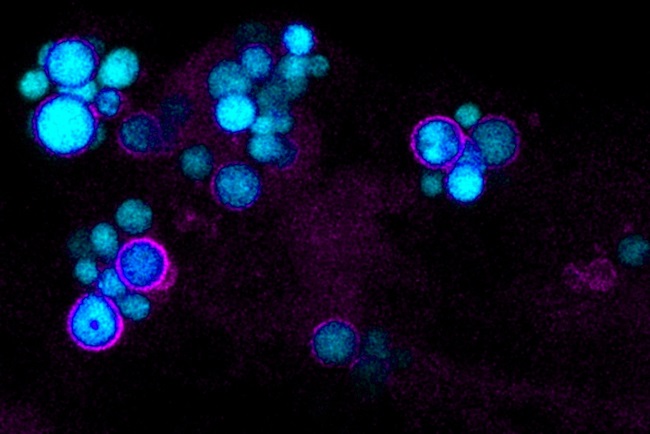Current Understanding of Cryptococcus and Cryptococcosis
A special issue of Microorganisms (ISSN 2076-2607). This special issue belongs to the section "Medical Microbiology".
Deadline for manuscript submissions: closed (30 September 2020) | Viewed by 27647
Special Issue Editor
Special Issue Information
Dear Colleagues,
Cryptococcus is a genus of basidiomycete yeast and a highly successful fungal pathogen in animals that causes cryptococcosis. In humans, cryptococcal infection is most commonly associated with severe immunocompromise, and is the cause of hundreds of thousands of deaths and an estimated 15% of acquired immune deficiency syndrome (AIDS)-related deaths. Life-threatening infection most often takes the form of meningitis, which results from the dissemination of pulmonary infection. A number of species cause infection, with Cryptococcus neoformans the major pathogenic species. Infection with Cryptococcus gattii is unusual, as it can occur in the immunocompetent and is the cause of an ongoing outbreak in North America that originated in Vancouver Island, Canada.
This Special Issue aims to present the diversity and complexity of Cryptococcus and cryptococcosis, from molecular microbiology to clinical studies. The study of Cryptococcus has generated key findings in a wide range of fields. We embrace the diversity of Cryptococcus and cryptococcosis research and welcome any submissions related to the study of this intriguing yeast and pathogen.

Figure 1. Fluorescent labeling of Cryptococcus neoformans Image. Credit: Ffion Hammond, University of Sheffield.
Dr. Simon Johnston
Guest Editor
Manuscript Submission Information
Manuscripts should be submitted online at www.mdpi.com by registering and logging in to this website. Once you are registered, click here to go to the submission form. Manuscripts can be submitted until the deadline. All submissions that pass pre-check are peer-reviewed. Accepted papers will be published continuously in the journal (as soon as accepted) and will be listed together on the special issue website. Research articles, review articles as well as short communications are invited. For planned papers, a title and short abstract (about 250 words) can be sent to the Editorial Office for assessment.
Submitted manuscripts should not have been published previously, nor be under consideration for publication elsewhere (except conference proceedings papers). All manuscripts are thoroughly refereed through a single-blind peer-review process. A guide for authors and other relevant information for submission of manuscripts is available on the Instructions for Authors page. Microorganisms is an international peer-reviewed open access monthly journal published by MDPI.
Please visit the Instructions for Authors page before submitting a manuscript. The Article Processing Charge (APC) for publication in this open access journal is 2700 CHF (Swiss Francs). Submitted papers should be well formatted and use good English. Authors may use MDPI's English editing service prior to publication or during author revisions.
Keywords
- Cryptococcus
- cryptococcosis
- cryptococcal meningitis
- fungal biology
- fungal genetics
- host–pathogen interactions
- fungal immunology
- medical mycology
Benefits of Publishing in a Special Issue
- Ease of navigation: Grouping papers by topic helps scholars navigate broad scope journals more efficiently.
- Greater discoverability: Special Issues support the reach and impact of scientific research. Articles in Special Issues are more discoverable and cited more frequently.
- Expansion of research network: Special Issues facilitate connections among authors, fostering scientific collaborations.
- External promotion: Articles in Special Issues are often promoted through the journal's social media, increasing their visibility.
- Reprint: MDPI Books provides the opportunity to republish successful Special Issues in book format, both online and in print.
Further information on MDPI's Special Issue policies can be found here.






